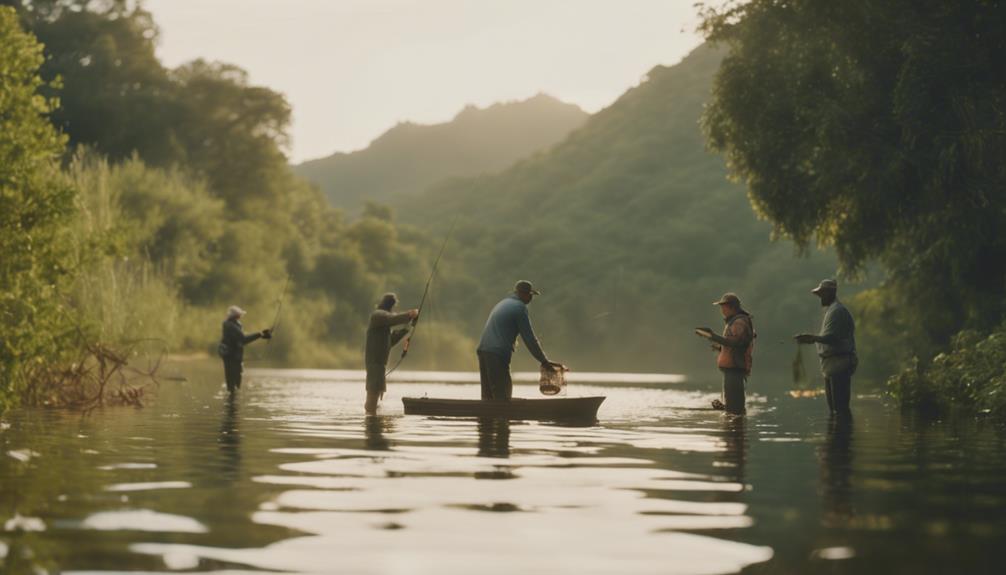Fly fishing casting is an essential skill that every angler must master to enjoy a successful fishing experience. Whether you’re a beginner or an experienced fly fisherman, understanding the various casting techniques can significantly improve your chances of landing that prized catch. In this comprehensive guide, we will explore the fundamentals of fly fishing casting, including techniques, tips, and common mistakes to avoid, ensuring you are well-equipped for your next fishing adventure.
Understanding Fly Fishing Casting: The Basics
Fly fishing casting is the art of presenting a fly to fish in a way that mimics natural bait. Unlike traditional fishing methods that rely on the weight of the lure, fly fishing uses the weight of the line to propel the lightweight fly. Understanding the mechanics behind this unique casting method is crucial. The primary components of fly casting include the rod, line, and fly. A fly rod is usually longer and more flexible than conventional fishing rods, allowing for better control and distance. The fly line, often thicker than regular fishing lines, is designed to provide the necessary weight to cast the fly. Mastering the basics of fly fishing casting involves learning key movements such as the backcast, forward cast, and presentation.
Essential Gear for Effective Fly Fishing Casting
To excel in fly fishing casting, having the right gear is vital. Essential equipment includes a fly rod, fly reel, fly line, and a selection of flies. When selecting a fly rod, consider its length and weight, as these factors affect your casting distance and accuracy. A 9-foot rod is a popular choice for beginners, as it offers a good balance between control and distance. The fly reel should match the rod’s weight and line type. Additionally, choosing the right fly line is crucial for successful casting. Floating lines are ideal for most situations, while sink-tip and sinking lines are better for deeper water. Furthermore, investing in quality flies—whether dry flies, wet flies, or streamers—will enhance your fly fishing experience.
Mastering the Basic Cast: Step-by-Step Guide
To get started with fly fishing casting, you need to master the basic cast. Begin by holding the rod with both hands, ensuring a comfortable grip. Stand with your feet shoulder-width apart and position your body parallel to the water. Start the cast with a smooth, upward motion, lifting the rod tip to around 1 o’clock. As the line straightens behind you, initiate the forward cast by smoothly lowering the rod tip while maintaining tension in the line. Aim to stop the rod at around 10 o’clock. The key to a successful cast is to use your wrist and arm fluidly, allowing the line to unfurl gracefully. Practice this motion repeatedly, focusing on maintaining a consistent rhythm and timing.
Advanced Casting Techniques for Fly Fishing
Once you’ve mastered the basic cast, you can explore advanced fly fishing casting techniques. One such technique is the double haul, which is particularly useful for increasing line speed and distance. To execute this technique, use both hands to pull the line while making your backcast and forward cast. This technique requires practice, but it can significantly improve your casting distance and accuracy. Another advanced technique is the roll cast, which is ideal for situations where there is little room for a backcast. The roll cast allows you to cast without needing to lift the line off the water, making it an essential skill for fishing in tight spots. Additionally, learning to cast in various wind conditions will enhance your versatility as an angler.
Common Mistakes in Fly Fishing Casting and How to Avoid Them
Even experienced anglers can fall victim to common mistakes in fly fishing casting. One of the most frequent errors is using too much force during the cast. Overexerting your muscles can lead to a poor presentation and tangles in the line. Instead, focus on a smooth, controlled motion to generate the necessary power. Another common mistake is failing to maintain a proper wrist position. Keeping your wrist straight and avoiding excessive bending will improve your accuracy and control. Additionally, neglecting to practice your timing can lead to inconsistent casts. Regular practice will help develop muscle memory, ensuring that your casting becomes second nature. By being aware of these common pitfalls, you can refine your casting skills and increase your success on the water.
Tips for Practicing Fly Fishing Casting
Practice is key to mastering fly fishing casting. Set aside time to practice on the water or in your backyard. If you’re practicing on land, use a target to improve your accuracy. Casting to a specific spot will help you develop precision and control. Furthermore, consider practicing in different weather conditions and environments. Casting in windy conditions will challenge your skills and prepare you for real fishing scenarios. Joining a local fly fishing club or taking lessons from a professional instructor can also provide valuable feedback and tips to enhance your technique. Remember, consistency and patience are essential as you work to improve your casting skills.
Conclusion: Elevate Your Fly Fishing Casting Skills
Fly fishing casting is a fundamental skill that can greatly impact your overall fishing success. By understanding the basics, investing in the right gear, mastering essential techniques, and avoiding common mistakes, you can elevate your casting skills to new heights. Whether you’re a novice or an experienced angler, continuous practice and learning will ensure you make the most of your fly fishing adventures. With dedication and the right techniques, you’ll be well on your way to casting like a pro and enjoying the thrill of fly fishing. So gear up, practice your casts, and prepare for an exciting day on the water!
By embracing these insights into fly fishing casting, you’re not only enhancing your skills but also opening the door to a more fulfilling and successful fishing experience. Happy casting!
